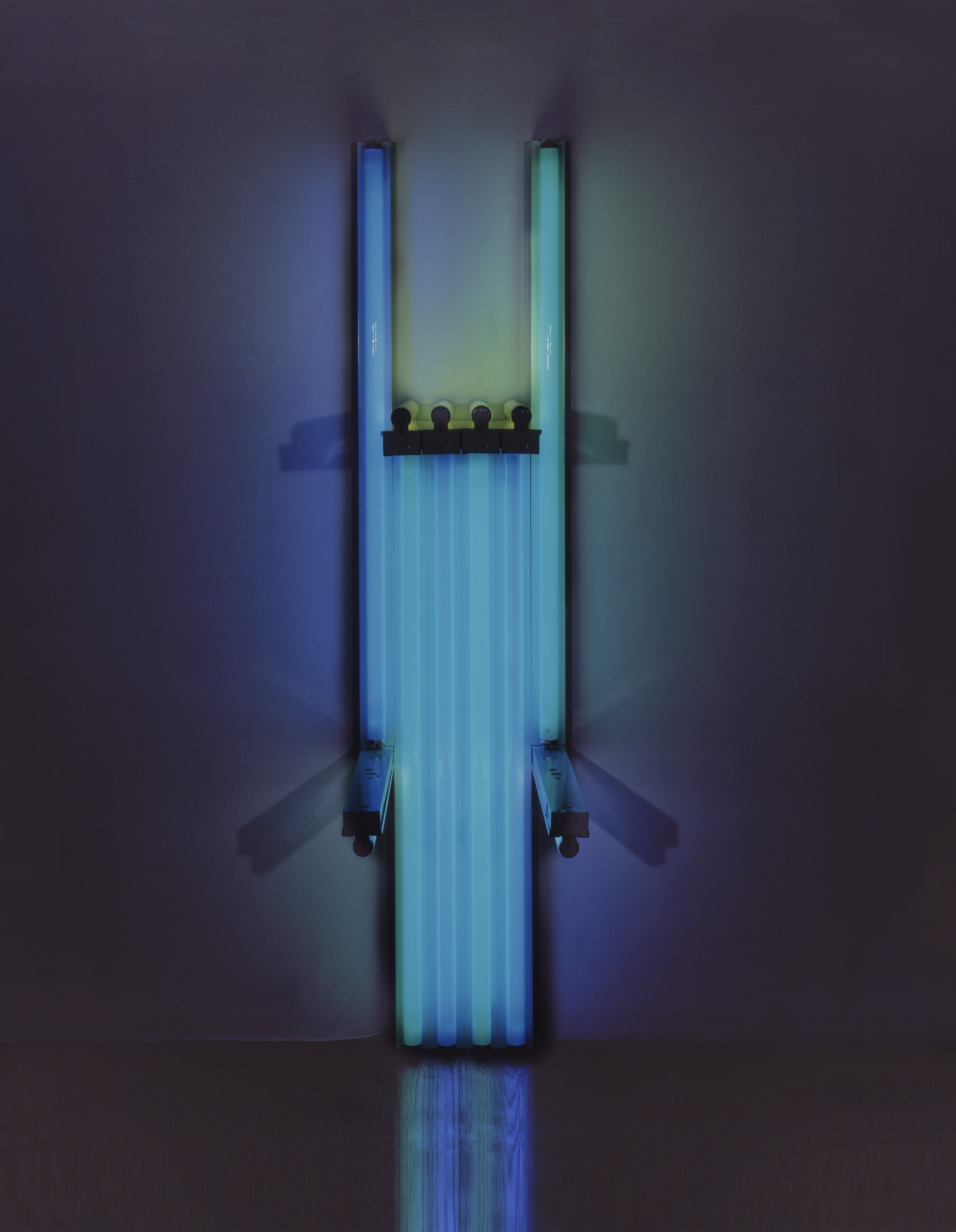
An unlikely source of inspiration for one of American’s great Minimalists, Dan Flavin, was the work of two gifted European ceramicists, Lucie Rie and her protégé Hans Coper. Not only did Flavin collect their vessels, but he was so inspired by the potters that he would go on to make two series of light works dedicated to them.
Now, for the first time, work by the three artists will be shown together. In the exhibition “Dan Flavin, to Lucie Rie and Hans Coper, master potters,” 18 works from Flavin’s 1990 light series will be seen alongside 15 ceramic works by Rie and Coper that come from Flavin’s personal collection.
The exhibition opens at the Vito Schnabel Gallery in St. Moritz this December. “It has always been a dream for me to show Dan’s work,” Schnabel says. “I was exposed to it at a pretty early age, when I was around 10 or 11 years old. I didn’t quite know what I was looking at, but I remember being totally captivated.”
This exhibition came about when Schnabel was introduced to Flavin’s only son Stephen, who is also the head of the artist’s estate. “We met and hit it off, and I laid out the show idea,” he says. “Vito liked it and here we are.”

Schnabel, who points out that some of the works in the show haven’t been seen in more than 25 years, notes that “the exhibition will be an interesting dialogue between the artists and, in a way, it’s a sweet show that would have been close to Dan.”
Like Flavin, the potters pushed against the traditional limits of their craft, expanding the notion of what sculpture could be. Regarded as the leading British potters of the latter 20th century, neither Rie nor Coper were actually born in England. Both were émigrés who had fled Nazism (Rie from Vienna in 1938 at age 36 and Coper from Germany in 1939 at just 19 years old) for England, where they established their modernist practices. Rie made stoneware or porcelain vessels, painting glazes in a wide range of colors directly onto the unfired pots, which were then fired once. Coper is known for his unconventional stoneware pots, molded in unique forms.
Perhaps he was fated to have an interest in Flavin’s work. “I have a real history with Dan’s work and it’s always been very important to me,” Schnabel says. “When Stephen and I started talking, I knew we could do some great things. It’s been an incredibly exciting thing to have happened.”



